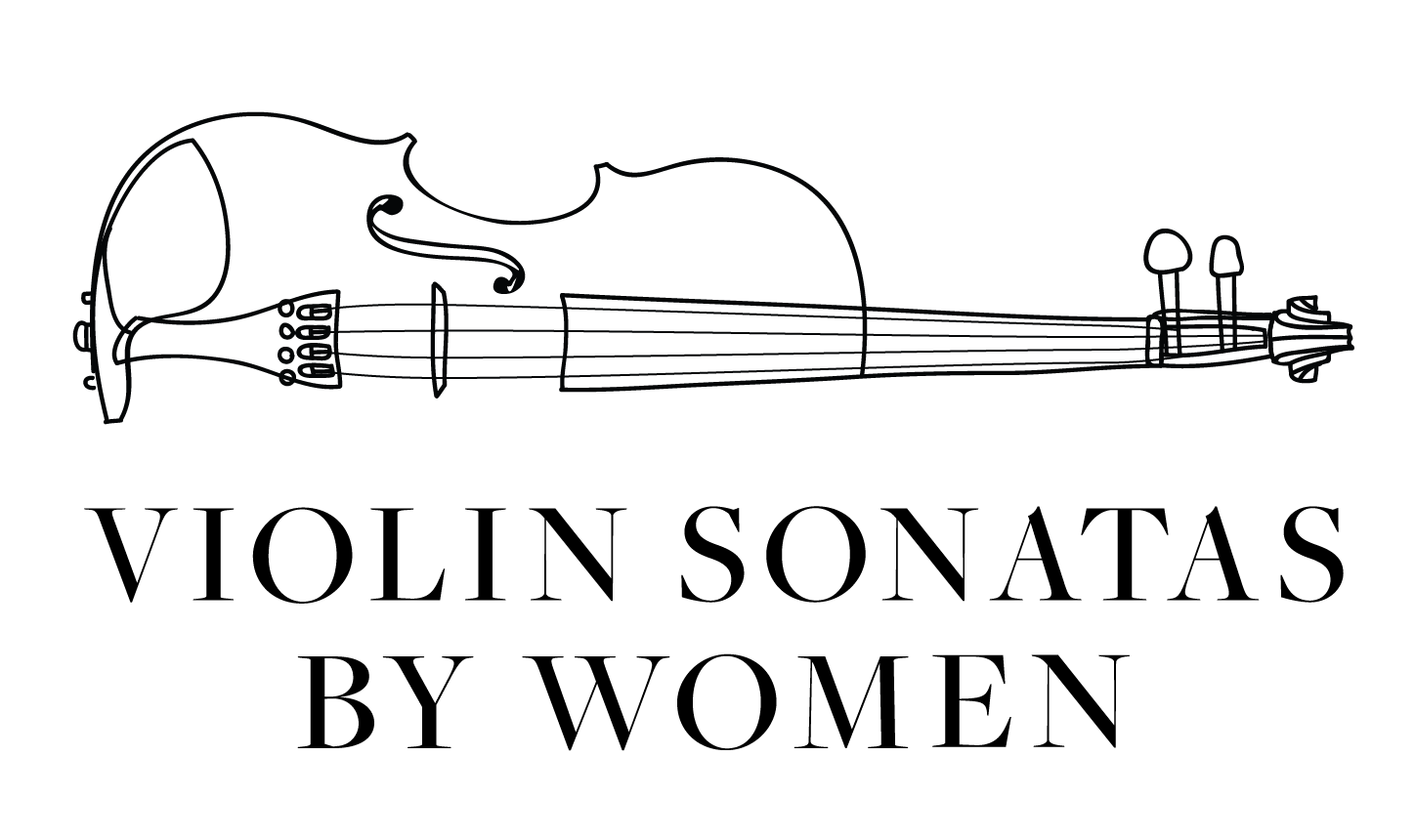Ethel Barns
English Violinist and Composer
Born: 1874 (London, England)
Died: 1948 (Maidenhead, England)
BIOGRAPHY
Ethel Barns was admitted to the Royal Academy of Music in London at age thirteen. She studied violin with Emilie Sauret, composition with Ebenezer Prout, and piano with Frederick Westlake.¹ Barns excelled in her violin studies and performed Louis Spohr’s Violin Concerto at her debut.²
By age seventeen, Barns had gained recognition as both a performer and composer. She composed and performed her own Romance for Violin and Piano in 1891. Soon afterward she began performing her works regularly at London concerts.³
Barns was married to pianist Charles Phillips and they began a series of recitals called the Barns-Phillips Chamber Concerts. The series offered Barns a platform to promote her works. Barns wrote mostly for violin, but also composed a few works for solo piano and orchestra. She wrote five violin sonatas, two of which are available today.⁴
In her later years, Barns was a distinguished member of the Society of Women Musicians, founded in 1911. She continued composing and performing until the 1920s.⁵
Sonata No. 2 in A Major (1904)
SONATA INFORMATION
Barns premiered both her second and fourth sonatas with her husband, Charles Phillips. Both sonatas were well-reviewed by critics of the time. Barns’ second sonata was also performed by Joseph Joachim.
I. Adagio (~5 min)
II. Scherzo (~3 min)
III. Presto ma non troppo (~4 min)
This work has been described as “a typically tempestuous and lyrical work with rich, sonorous piano harmonies and a difficult but always violinistic solo part.”⁶
SCORES
1. Manuscript Location: Unknown
2. First Edition (1904): British Library
RECORDINGS
Nancy Schechter and Cary Lewis: YouTube
Sonata No. 4 in G Minor for Violin and Piano, Op. 24 (1910)
SONATA INFORMATION
This work was premiered by Barns and Phillips in 1910.
I. Allegretto ma molto agiatato (~9 min)
II. Elegie: Larghetto (~6 min)
III. Allegro enercico (~8 min)
“The slow second movement, Elegie, opens with an atmostphieric, chromatic progression of fourths and fifths in the piano which leads into a beautifully languid violin melody.”⁷
SCORES
1. Manuscript Location: Unknown
2. First Edition: British Library
RECORDINGS
Nancy Schechter and Cary Lewis: YouTube
Sources
Tsou, Judy, Rose-Marie Johnson, and Heidi M. Boenke. “Violin Music by Women Composers: A Bio-Bibliographical Guide.” Music Library Association,1990. https://doi.org/10.2307/941984.
Fuller, Sophie. Pandora Guide to Women Composers: Britain and the United States 1629-Present. Pandora, 1995.
Fuller, Sophie. "Barns, Ethel." Grove Music Online. 2001. https://www.oxfordmusiconline.com.ezproxy1.lib.asu.edu/grovemusic/view/10.1093/gmo/9781561592630.001.0001/omo-9781561592630-e-0000045629.
Ibid.
Fuller, Pandora Guide to Women Composers.
Ibid.
Ibid.

